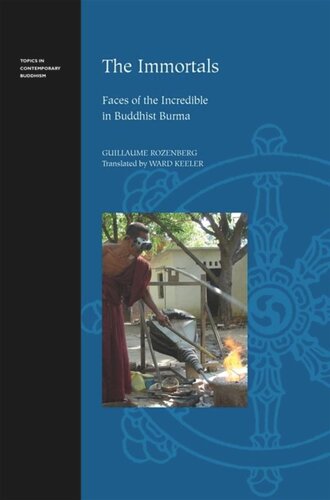

Most ebook files are in PDF format, so you can easily read them using various software such as Foxit Reader or directly on the Google Chrome browser.
Some ebook files are released by publishers in other formats such as .awz, .mobi, .epub, .fb2, etc. You may need to install specific software to read these formats on mobile/PC, such as Calibre.
Please read the tutorial at this link: https://ebookbell.com/faq
We offer FREE conversion to the popular formats you request; however, this may take some time. Therefore, right after payment, please email us, and we will try to provide the service as quickly as possible.
For some exceptional file formats or broken links (if any), please refrain from opening any disputes. Instead, email us first, and we will try to assist within a maximum of 6 hours.
EbookBell Team

0.0
0 reviewsIn 1952 a twenty-six-year-old man living in a village in Central Burma was possessed by weikza—humans with extraordinary powers, including immortality. Key figures in Burmese Buddhism, weikza do not die but live on in an invisible realm. From there they re-enter the world through possession to care for people's temporal and spiritual needs while protecting and propagating Buddhism. A cult quickly formed around the young peasant, the chosen medium for four weikza ranging in age from 150 to 1000 years. In addition, these weikza appeared regularly in the flesh. The Immortals plunges us into the midst of this cult, which continues to attract followers from all over the country who seek to pay homage to the weikza, receive their teaching, and benefit from their power.
The cult of the four weikza raises a number of classic anthropological issues, particularly for the anthropology of religion: the nature of the supernatural and of belief; the relations among religion, magic, and science; the experience of possession. It also provides a window on contemporary Burmese society. To contemplate both, the author adopts an unconventional approach, which itself reflects representation in anthropology, or, more precisely, how anthropology uses description and the interpretations description occasions to make sense of what it studies. The writing makes clear both the indigenous take on reality and the work of anthropological understanding as it is being elaborated, along with the ties that connect the latter to the former. Mixing narration of the incredible with reflection on the forms religious experience takes, The Immortals offers us a way to accompany the author into the field and to grasp—to take up and make our own—the anthropologist's interpretations and the realities to which they pertain.